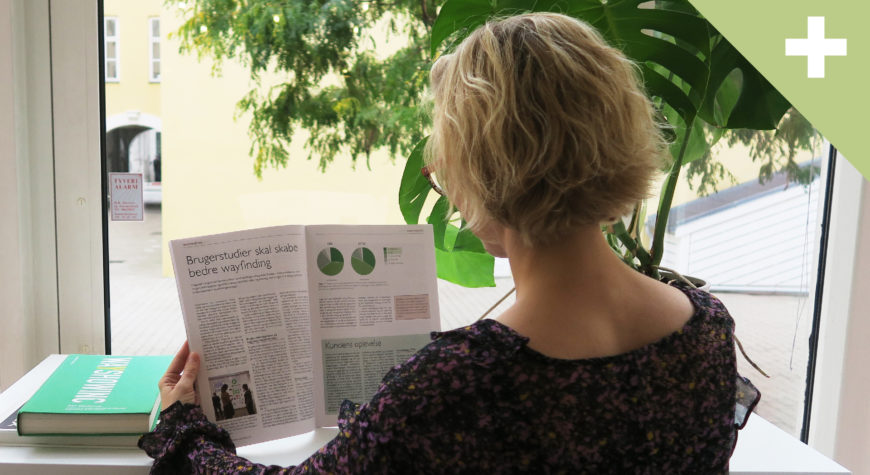The Danish magazine ‘Hospital Drift & Arkitektur’ has published an article about Triagonal’s work at Randers Regional Hospital, where we have developed a new wayfinding systematic based on extensive user studies. Through these user studies, we have gathered knowledge and experience that enable us to create evidence-based design solutions.
Focus in the article, is on the results gathered in an after study carried out six months after implementing the new wayfinding. Results of the study is used to measure the impact the new systematic has had on the patients’ and visitors’ ability to navigate around the hospital.
In the study, we used both qualitative and quantitative methods to get a more nuanced and complete insight. Through the quantitative studies, we ensured a systematic data collection with measurable parameters to compare the data before and after. The qualitative studies provided us with a more comprehensive understanding as it allowed detailed questions relating to specific wayfinding areas.
Overall, the results from the user studies are positive. The data shows an improvement of more than 20%, from the before to the after studies, in the categories, where people answered that it was ‘very easy’ or ‘easy’ to navigate. Furthermore, several patients mentioned that, because of the new systematic, it would be easier for them to navigate after just one time with the new signage.
The results also show that 77% had used the new terminology (Entrance A, B, C etc.) about the entrance they used when entering the hospital. The fact that patients and visitors are adopting the new terminology and using it in practice is a positive development after just six months.
The studies also showed that many patients and visitors still seek human contact when they visit a hospital, and therefore, even an evidence-based design solution, will never be able to substitute the staff and volunteers. Instead, it can help take the pressure off and provide a better overall patient experience.
Read the full article in Danish here.

